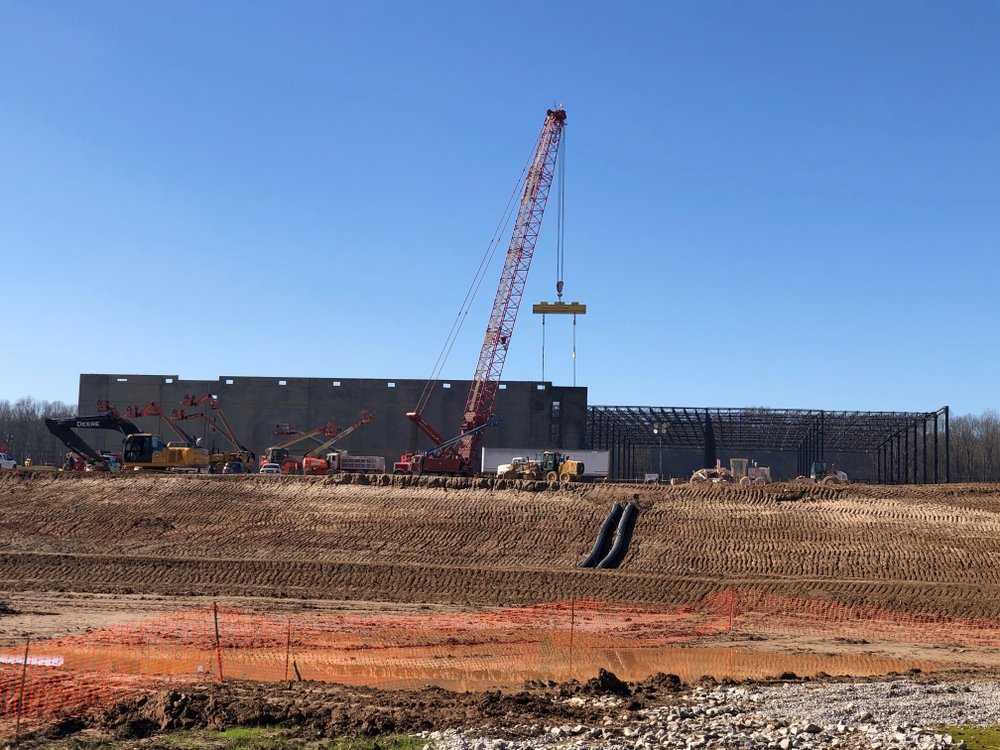Amazon officially broke ground for its newest distribution center in the Raleigh area of Memphis this past January.
Long awaited local, city and state governments, this newest Amazon center promises 1,000 new jobs for the community, with benefits such as a minimum wage of $15 per hour, 401k with a 50% match and a 20 week paid maternity leave.
Memphis Mayor Jim Strickland has expressed enthusiasm for the project on multiple occasions, stating that the new Amazon center will bring some momentum to the Memphis area. “Everyone should know that Memphis is open for business,” Strickland said to news station WREG.
Despite this promise of economic growth, is the new Amazon distribution center capable of living up to its expectations? Considering fluctuations in employment rates for areas with newly constructed retail distribution centers, as well as the numerous tax breaks and subsidies Amazon has received from these cities, there seems to be something that’s less favorable than that smiling box would first indicate.
Memphis has an unemployment rate of about 3.9% , which is 0.6 points higher than the Tennessee average according to the Bureau of Labor Statistics. That equals to about 25,246 people who are unemployed. Additionally, many families in Memphis and Shelby County struggle with remaining above the poverty line. A report from the 2019 Memphis Poverty Fact Sheet found that 27.8% of Memphis residents fell below the poverty line, which is more than double the state average. Based on this data, Memphis is clearly an area in need of an economic boost.
When comparing this need to Amazon’s promised policies, however, it seems that the e-commerce giant falls short. Despite improving employee minimum wages and benefits after backlash over the years, Amazon still has a long way to go before the company can fill the community’s needs as promised.
For instance, compared to these numbers, Amazon’s prospected 1,000 jobs would be a small drop in the bucket towards solving the unemployment issue. Amazon has also announced the use of new iAmazon Robotics technology, which will be used as a substitute for manual labor in tasks such as packing and shipping. Although the use of robotics is widely accepted by production companies to quicken production and decrease costs, these positions could easily be given to human employees, thus creating even more employment opportunities for the area. In an economy where individuals are struggling to find work, companies should focus on creating as many job opportunities as possible, not turning them over to advanced technology.
Furthermore, recent studies conducted by the Economic Policy Institute in 2018 prove that, while the rate of warehouse and storage jobs does increase, the overall net jobs created in the private-sector remains unaffected. This is because the job growth from mass distribution centers is often offset by decreases in other industries.
In the end, Amazon might be getting more than they are giving back. Over the past few years, Amazon has been under investigation for the copious amounts of subsidies and tax breaks the company receives for building their distribution centers. According to Good Jobs First, Amazon has received $1.115 billion since 2000 in state tax breaks from various communities across the U.S. In 2018, the company earned $11 billion and had a tax bill of negative $129 million.
While these numbers do not take into consideration how much the company pays in income-taxes, totaling around $1.2 billion for 2018, it is still apparent that Amazon receives major financial gain, both from state and federal governments. This is because, whenever the company buys depreciable property, invests in new warehouse equipment or gives employees restricted stock grants, Amazon can record these expenses and get tax deduction for them.
Not to mention cities offer Amazon tax subsidies in their own locations as incentive to build in the area, even though Amazon needs those locations more than the cities need them in order to become the all-encompassing, e-commerce mogul that they hope to be. The Economic Policy Institute states that state and local taxes are on average less than 2% of the cost of doing business, meaning that big name companies like Amazon could easily build warehouses without incentives from local governments.
Now, I’m not saying we should boycott Amazon, storm the plant with pitchforks and demand the company close their doors; I’m merely asking for discretion and caution from future small town areas, like Martin, who could be seduced by the promise of shiny new jobs and production without considering how much they are giving away in return. Both future employees and government personnel need to be aware of how much money and support we as a populous give to these distribution and retail companies.
While Amazon has made some improvements in employee pay and benefits, there is still a long way to go before the relationship becomes purely mutual.


